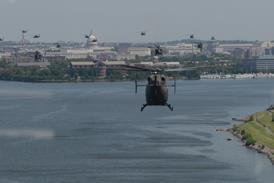Jakarta finally has released Merpati Nusantara Airlines from the grip of Garuda Indonesia, but the government is still calling the shots in Merpati's fleet planning.
Merpati and Garuda quietly completed their divorce in April when a government decree came into force officially separating the two carriers. The government approved the split in 1993, but the delay was caused by the need to carry out complete valuations of both companies and resolve claims made by each airline against the other. Transport officials say the split will help both carriers, but the main reason for the separation was to boost Garuda's balance sheet before privatisation by removing the burden of the unprofitable Merpati.
But the split does not mean freedom for Merpati's management. Two years after ousting the then president of Merpati for opposing the lease of Indonesian-built CN-235s, the government has announced that Merpati will acquire IPTN's N-250s, which are still at least a year away from certification. Jusif Habibie, Indonesia's research and technology minister and chairman of IPTN, imposed the deal on Merpati to replace its fleet of ATPs.
Merpati has struggled for years with a mixed fleet of at least 10 aircraft types. Finding a replacement for the ATPs has become a priority since the transport ministry grounded Merpati's entire ATP fleet pending investigation, following a fatal crash in April.
Merpati continues to lose money. Last year it lost US$55 million, against a loss of US$53 million in 1995. Merpati's new finance director, Desmond Ismael, hopes the airline may reduce its debt this year by convincing Jakarta to convert part of it into equity.
Source: Airline Business























